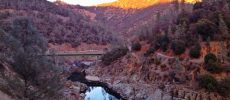On April 7, 2017, the Idaho Conservation League (ICL) lodged a complaint with the Idaho Department of Environmental Quality (DEQ) and the Idaho State Department of Agriculture (ISDA) regarding what ICL considers to be wastewater permitting and handling violations by Wilson Creek Feeders, Inc. and Sorrento Lactalis. The complaint questions whether the feedlot is properly permitted and equipped to handle the wastewater and whether Sorrento Lactalis’ wastewater deliveries are proper under its own land application permits.
Sorrento Lactalis, Inc. owns and operates a major cheese production plant in Nampa, Idaho approximately 20 miles west of Boise, Idaho. Lactalis, Inc. is a division of the French conglomerate Groupe Lacatalis, which is the world’s largest dairy milk processor employing approximately 52,000 people in 198 plant sites worldwide. The Nampa plant is Sorrento’s largest operation in the United States. The plant holds permits under the federal Clean Water Act National Pollutant Discharge Elimination System (NPDES) Program concerning the discharge and disposal of its process wastewater, the federal Clean Air Act (due to its handling and use of anhydrous ammonia for its refrigeration systems), and Idaho law concerning the irrigation re-use land application of process wastewater on fields adjacent to the plant.
The treatment and disposal of process wastewater has long been a perplexing problem for Sorrento and its predecessors.
Sorrento and its predecessors have also long trucked wastewater and whey by-product offsite for disposal, though that approach is not particularly cost-attractive. According to the ICL complaint, Sorrento previously used to truck its waste to L&R Environmental, a facility properly permitted and regulated to dispose of various liquid wastes in large evaporation ponds.
Located south of Murphy, Idaho, and south of the Snake River, Wilson Creek Feeders is a multiple thousand head custom cow feeding operation. Between 2012 and 2016, the feedlot excavated a rectangular pit/pond 565 feet long and 90 feet wide that it has slowly been filling with Sorrento wastewater and whey sludge over the years. The feedlot obtained a permit from ISDA for construction of the pond for purposes of storing cattle feed additives (whey, reclaimed water, and sludge water). According to the feedlot owner, the pond’s contents are pumped and sprayed (added) to the facility’s cattle feed. Upon, investigation in January 2016, DEQ found this to be the case. In 2013 however, prior investigations of the feedlot pursuant to other anonymous complaints found that the Sorrento wastewater was being spread for dust abatement purposes on the feedlot’s dirt roads, and that the same was also being disposed of by application to the facility’s compost rows. Neither Sorrento, nor Wilson Creek Feeders possessed the necessary DEQ permits for such waste disposal at the time.
According to current Sorrento wastewater treatment plan documents filed with DEQ, the plant ships approximately 2,200 tons of concentrated wastewater and whey and cheese sludge offsite for disposal each month.
While ICL acknowledges that cheese manufacturing waste products like those generated by Sorrento is viable as a cattle feed supplement, the group questions whether such use is really the primary means of disposal at the feedlot. ICL’s Complaint alleges that the massive pond at Wilson Creek Feeders “does not appear to be connected to any sort of [pump] system,” and that it is contrary to cattle feeding practices to use such waste for feed additives after it is exposed to the open air elements, road dust, and airborne manure compost particulates—particularly during the summer when ambient air temperatures at the feedlot regularly reach 100 degrees.
Conclusion and Implications
For its part, EPA is thus far deferring to ISDA and DEQ to investigate and handle the matter. EPA has discussed the matter with both state agencies given their primary jurisdiction, and is satisfied with the investigative response to date. What the ISDA and DEQ investigations determine remains to be seen.
(Andrew Waldera)




